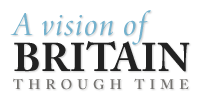In 1870-72, John Marius Wilson's Imperial Gazetteer of England and Wales described Ashburton like this:
ASHBURTON, a town, a parish, and a subdistrict in the district of Newton-Abbot, Devon. The town stands on the Yeo, about 1¼ mile from the Dart, near the grandest part of Dartmoor, 7 miles NNW of Totnes; and a railway to it, from the South Devon, was in advanced progress in 1869. It was anciently called Asperton and Aisbertone. ...
It belonged to the Crown at Domesday; was given to the see of Exeter before 1310; became a stannary town in 1328, on account of tin and copper mines in its neighbourhood; belonged to the Crown again in the time of Charles I.; was taken by Fairfax in 1646; and went, after various changes, into the possession of Lord Clinton. It consists principally of two long streets; and has a neat appearance. The market house has a lofty basement for market purposes, and an upper story with public rooms; and is a fine edifice, in the Italian style, built in 1850, at a cost of upwards of £3,000. The parish church is a spacious cruciform structure, of perpendicular date, with modern alterations, surmounted by a central tower, 90 feet high, was formerly collegiate, and contains some fine monuments. There are four dissenting chapels, a grammar school, with £80 of endowed income, and two exhibitions and two scholarships at Exeter college, Oxford, other charities with £322, a post office‡ under Newton-Abbot, and three chief inns. A weekly market is held on Saturday, and fairs on the first Thursday in March and June, 10 Aug., and 11 Nov. The manufacture of serge and blanketting is carried on. A great business formerly arose from the thoroughfare between London and Plymouth; but has died away since the opening of the South Devon railway. The town is a borough by prescription; sent two members to parliament in the times of Edward I. and Henry IV., and from 1640 till 1832; and was half disfranchised by the act of 1832, and entirely disfranchised in 1868. It is governed by a portreeve, a bailiff, and constables. Acres, 6,936. Real property, £13,670. Electors in 1868, 356. Pop., 3,062. Houses, 574. John Dunning, solicitor-general in 1767, Dr. Ireland, dean of Westminster, and William Gifford, the well-known editor of the Quarterly Review, born in 1756, were natives. A peerage, with the title of Baron Ashburton, was given to Dunning in 1782; and, becoming extinct in 1823, was revived in favour of Alexander Baring in 1835.-The parish, as already noted, is co-extensive with the borough. The living is a vicarage, in annexation with the vicarage of Buckland-in-the-Moor, in the diocese of Exeter.-Value, £639.* Patrons, the Dean and Chapter of Exeter.-The subdistrict includes six parishes and a chapelry. Acres, 31,599. Pop., 6,362. Houses, 1,245.
Ashburton through time
Ashburton is now part of Teignbridge district. Click here for graphs and data of how Teignbridge has changed over two centuries. For statistics about Ashburton itself, go to Units and Statistics.
GB Historical GIS / University of Portsmouth, History of Ashburton, in Teignbridge and Devon | Map and description, A Vision of Britain through Time.
URL: https://www.visionofbritain.org.uk/place/345
Date accessed: 28th October 2024
Not where you were looking for?
Click here for more detailed advice on finding places within A Vision of Britain through Time, and maybe some references to other places called "Ashburton".
